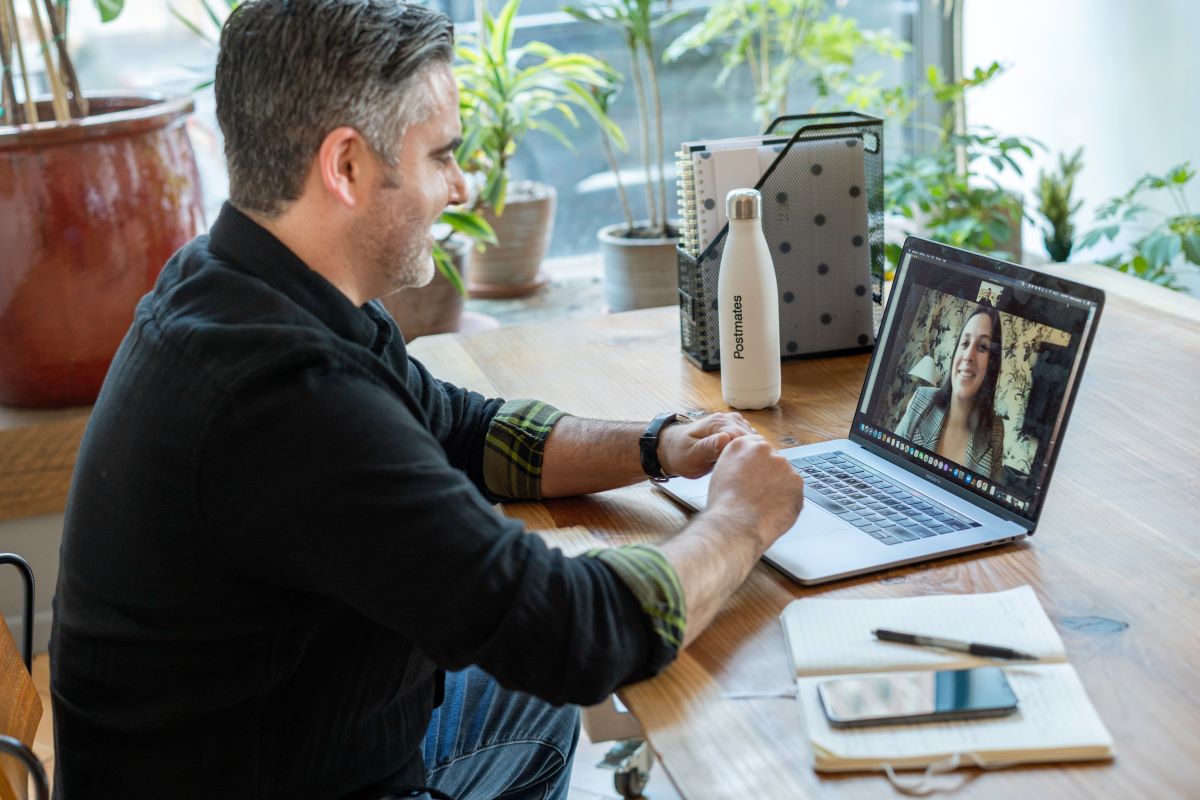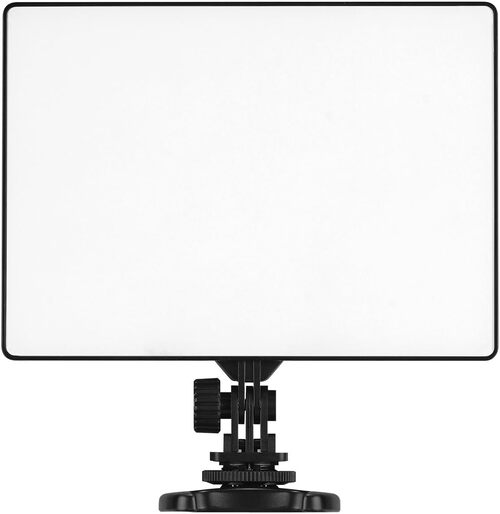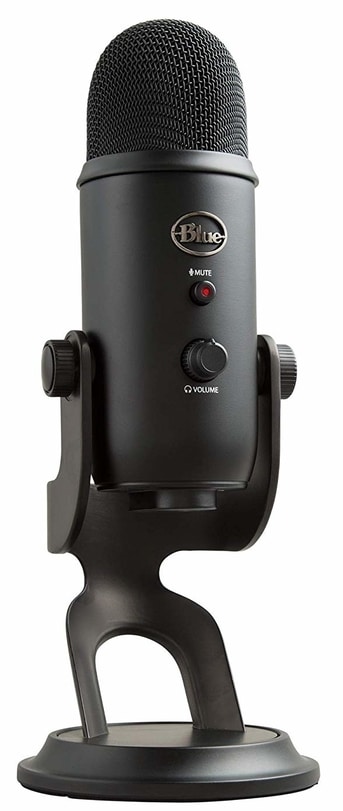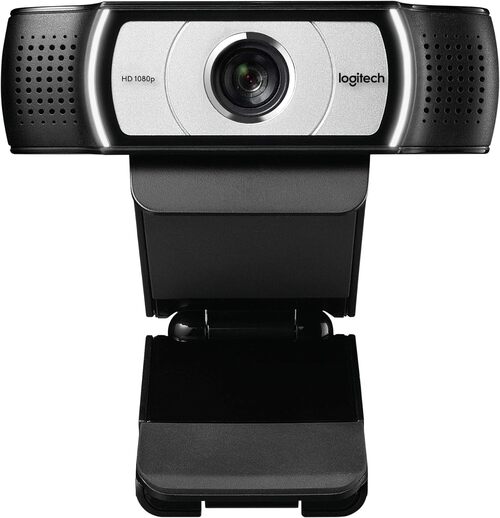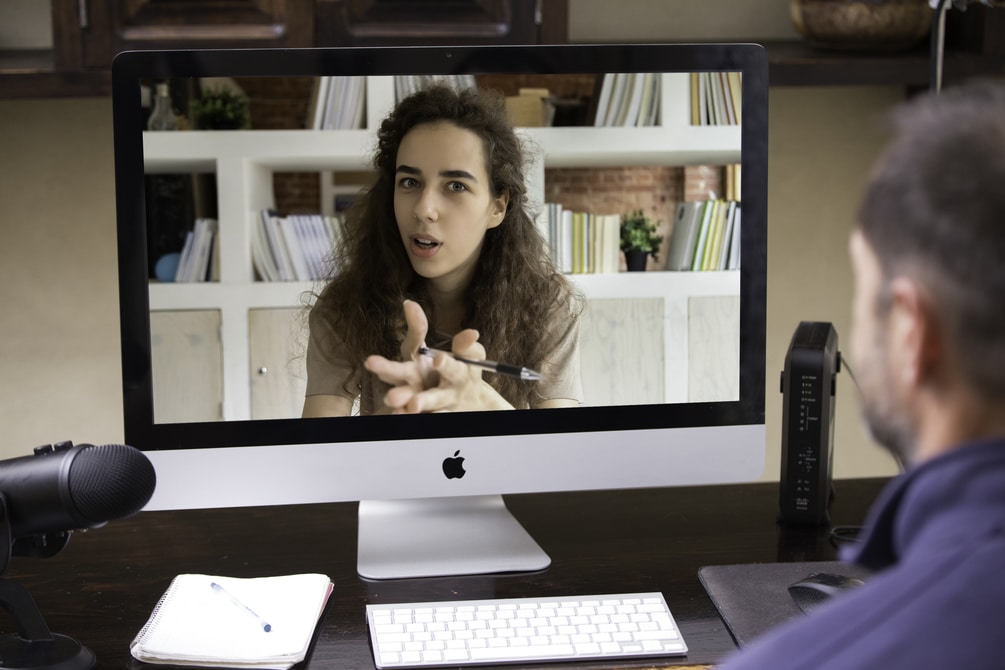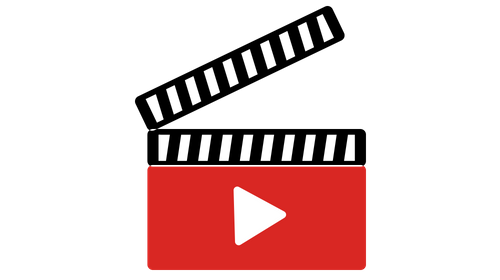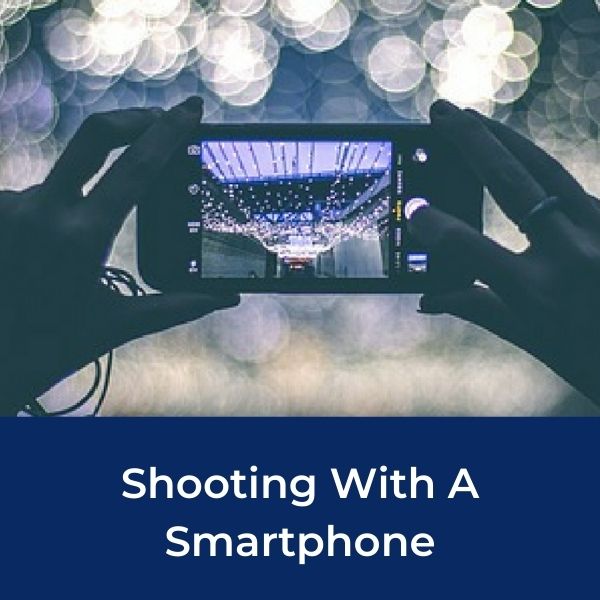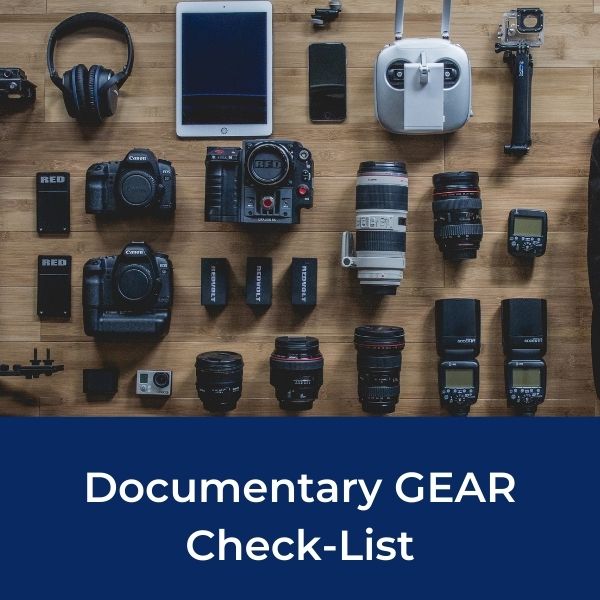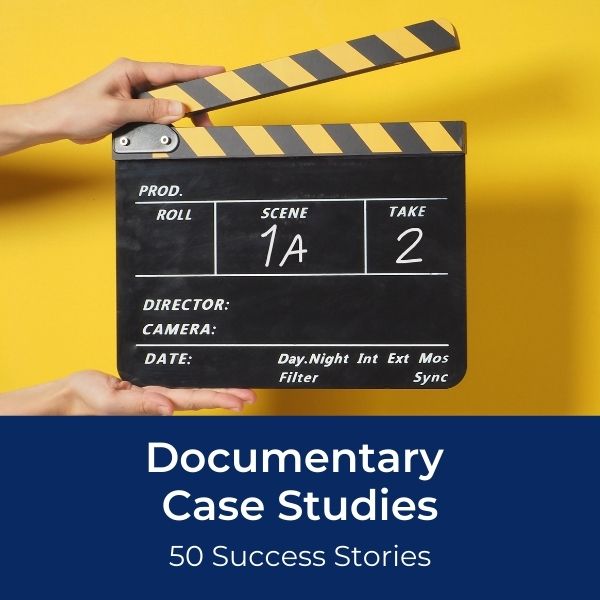10 Tips for Recording Webcam Interviews for Your Documentary
#SkypeInterviews, #WebcamInterviews, #OnlineInterviews
If network news stations like CNN and FOX can broadcast Skype and other webcam interviews, why can't you for your documentary?
Scroll down to learn the pros and cons of recording a webcam interview for your documentary.
But first, watch out for these common mistakes!
Online Video Mistakes
10 Tips For Successful High-Quality Webcam Interviews
Tip 1: Create Flattering Lighting
Make sure your guest has adequate and flattering light on their face. A window or a lamp can work great. Or if they have time to purchase a $40 light from amazon, even better. A simple production light like the YongNuo YN-300 Air can do wonders.
On the other hand, avoid harsh lighting that may be coming in too bright from a window or overhead causing strong shadows. Also watch out for glare on glasses.
Tip 2: Use An External Microphone
This may be the most important thing to focus on.
While the internal mic on a computer is fine for calls with family and friends, it's not going to cut it for a professional shoot.
Ideally, ask your guest to use a high-quality USB mic such as the Blue Yeti or (even better) record on a separate device such as the Zoom H1.
If they don’t have a microphone, suggest they use a headset or earbuds with an inline mic. These will improve the audio quality, ensure the guest can hear clearly and help eliminate delay and feedback.
Tip 3: Adjust Camera Angle To Eye-Level
You want your guest to be looking straight ahead at eye-level into the camera, not looking down at the desk. This may involve putting their laptop on top of some books to raise the camera to eye-level.
 Make sure there's plenty of light on your guest's face and that their eyes are looking straight ahead at the camera (not looking down).
Make sure there's plenty of light on your guest's face and that their eyes are looking straight ahead at the camera (not looking down).Tip 4: Choose A Quiet Location
Ask the guest to set up somewhere quiet and in a space as acoustically dead as possible. You want to avoid an audio track riddled with barking dogs, screaming children, highway traffic, or emergency vehicle sirens. Background noise from vents can also cause havoc with the sound.
Your guest likely won’t have a studio handy, but bedrooms, offices and carpeted areas usually work best. Avoid an empty room with echo.
And of course, turn off all distractions such as cell phones, computer apps and Facebook Chat.
Tip 5: Use a plug-in web camera
The internal webcam on computers tend to be a lower quality, so have your guest use an external USB plug-in webcam if possible, for example the Logitech c930 which can dramatically improve image quality.
Tip 6: By-Pass The Computer and Use Separate Gear
Is your guest video savvy and own some gear? Ask them to set up their video camera and mic next to the computer and simply use the computer as the communication tool to facilitate the interview. The actual interview will be recorded independently from the computer. That way you completely cut out any potential internet issues.
Tip 7: Conduct a Test Recording
If possible, conduct a test interview in advance to make sure all is working. Or ask the guest to record a video/sound test before the interview and make suggestions based on what they send you.
Check for lighting, background and sound quality.
Tip 8: Check internet speed in advance
Use speedtest.net and aim for a minimum download speed of 2 megabits per second (Mbps) for both you and your guest. Otherwise you could get lots of drop outs, pixelated images, or other errors.
For extra stability, ask your guest to connect via hard wire vs WiFi.
Tip 9: Lock-down your webcam
settings
To make sure there's no flickering or focus issues, either use
software that came with your webcam or use an app like Mac's "Webcam Settings" to lock the image in place.
Tip 10: Choose the right webcam application
Skype has traditionally been the go-to for webcam interviews, but there are many others to choose from. Zoom is a popular and, perhaps, more stable option to Skype.
Of course, there's also Facetime, Facebook Messenger, Viber, Slack, Google Hangouts and WhatsApp. Do some testing and see which one works best for you!
Let us know about your experience with webcam interviews in the comments below...
Webcam Interview Gear
The Pros & Cons of Conducting A Webcam Interview For Your Documentary
The PROS of Webcam Interviews (For Your Documentary)
1) Great for breaking news
This is why there are so many webcam interviews on the network news stations. When there's breaking news, there's no faster way to get a guest on the air than via phone or webcam. If you're working on a documentary that's a breaking news story and you don't have time to fly to the location for an in-person interview, a webcam interview is a great option.
2) Saves time and money
It can cost thousands of dollars to hire a crew, pay for airfare and other travel expenses if the person you need to interview is in another city, state or country.
3) Convenient
There's no logistics other than setting up time in front of your computer!
4) Can add a certain "feel" or authenticity
Webcam interviews are great for remote shots such as the Arctic or even the moon. Or perhaps you're doing a documentary on teens or social media. For example, you can see a webcam interview clip in the 2019 Netflix documentary "The Great Hack". In these situations, doing the interviews on webcams adds a certain "feel" to the story that makes sense for the topic!
5) Provides quick content for a "Proof of Concept" or fundraising trailer
Before you have funding, you can record some of your interviews through webcam to use in a proof of concept trailer to introduce potential funders to some of your characters and storylines. You can let funders know you need money to hire a crew for "proper" in-person interviews.
6) Great for auditioning and research
Similar to the proof of concept idea, you can use webcam interviews as research tools and to 'audition' potential characters in your film.

Successful filmmaking is not about having the "best" camera
The Oscar-Winning documentary ICARUS includes segments shot on a $200 consumer camera (for the video diary sections). The filmmakers eventually came to the realization that the consumer grade footage from the Canon Vixia lent a sense of authenticity to the film that would have been missing had they shot everything on cinema-grade cameras.
The CONS of Webcam Interviews (For Your Documentary)
 Shooting webcam interviews can be fun, but watch out for the tech snags.
Shooting webcam interviews can be fun, but watch out for the tech snags.1) Unreliable signal
Even with the strongest connections, the internet can go down unexpectedly. The video recording can be jittery, cut out unexpectedly or freeze mid-interview. Worst case, the file could even get corrupted making the entire recording unusable. All kinds of unexpected tech issues can wreak havoc on the best-laid plans.
2) Low quality image and sound
Even the best quality computer webcams can't compete with a DSLR, 4k Smartphone or other professional video cameras and external microphones.
3) Limited control over look & feel
Depending on the savviness, interest and patience of your guest to set up a nice looking shot (nice background, good lighting, proper framing, etc), you may not have much control on how the shot looks and could end up with something that looks pretty bad.
4) Less intimate setting
Interviews tend to be better in person where you can make eye contact, read emotions, respond and react. Through a web cam, there can be delays in the feed, the signal can freeze or other tech issues that can throw off the momentum and natural "flow" of the interview. And it's more difficult to read body language and respond properly to any off camera issues or non-verbal signals.
4) More stressful for the guest (potentially)
By the time the guest has set up the lighting, microphone and background for their shot, there's the potential they'll be exhausted and completely distracted once the interview starts.
5) It will "look" like a Skype interview
Unless a webcam interview makes sense for the story, the low-quality webcam-style interview could be distracting to the viewer and to the story.
6) More room for error
With a webcam interview, there are more elements out of your control.
7) Could jeopardize a broadcast deal
If you have hopes of getting a broadcast or distribution deal, premium channels in general want the majority of the footage shot on a high quality camera.
It's okay to include some low-quality clips such as cell phone footage, old archive clips or even a few webcam interviews as long as the primary footage is shot on a high-quality camera such as the Canon C300.
Therefore doing ALL the interviews on Skype potentially jeopardizes your chances at a broadcast/distribution deal. If you're creating a documentary for YouTube only then this won't be an issue.
How to Record Interviews ONLINE
Most Famous Webcam Interview (Ever)
Resources
- Step-by-Step: How To Make A Documentary
- How to Maximize Smartphone Video Footage For Your Documentary
- Should You Pay Your Documentary Subjects?
Documentary Resources
Ready To Make Your Dream Documentary?
Sign up for our exclusive 7-day crash course and learn step-by-step how to make a documentary from idea to completed movie!
